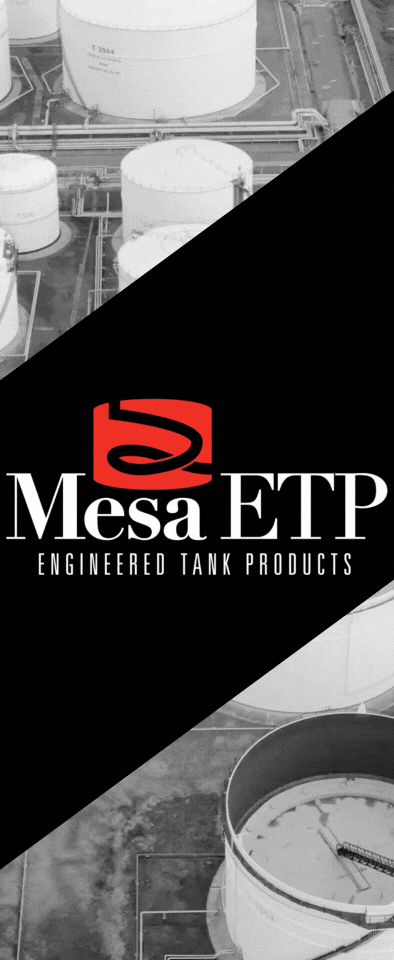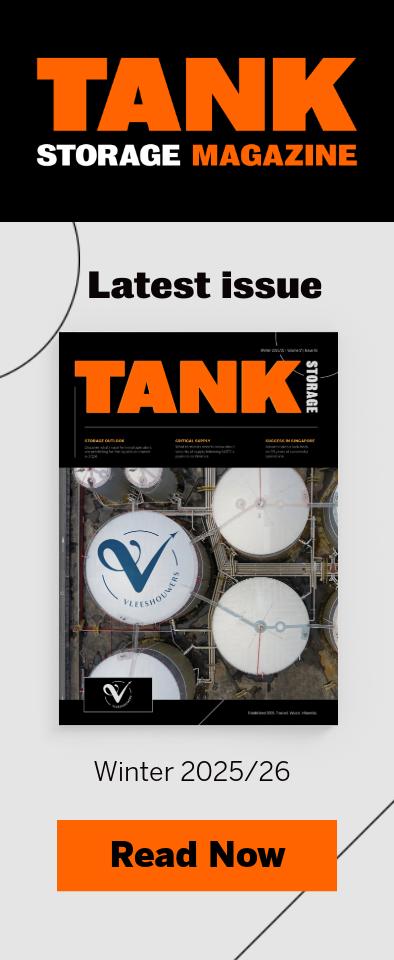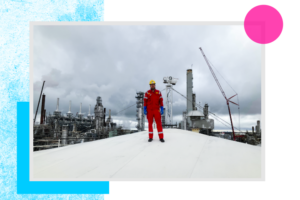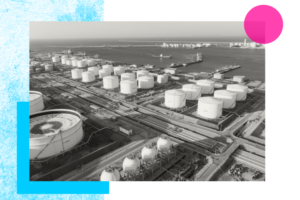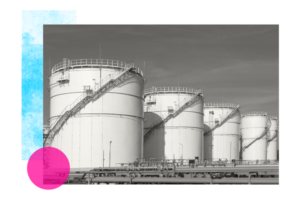Peter Maas, chief executive officer at Grandperspective, explains how the right sensor technology could play a crucial role in advancing green ammonia
The Western Sahara is home to Africa’s longest conflict, but the European energy industry is closely watching developments in this disputed territory, which is currently controlled by Morocco. This is because energy companies and European governments for that matter, see green ammonia, which can be produced in great abundance in here, as a vital component in the continent’s long-term energy goals.
The Moroccan government has provided subsidies, which is helping large-scale projects such as a $25 billion (€21 billion) renewable ammonia facility in Dakhla owned by Dahamco, a Moroccan and UAE join venture. When the facility is operational in 2031, it will produce over 1 million tonnes of ammonia, all of which will be exported to Europe.
If the Western Sahara is to become a green ammonia powerhouse, then the ports handling ammonia are going to need very significant storage capabilities. That will require large-scale investment, both in Moroccan and European ports.
The Benefits of Green Ammonia
But why green ammonia? Given the International Maritime Organisation’s strict climate timeline targets, many say that there are very few fuels that have the potential to deliver an 80% reduction in greenhouse gas intensity at large scale by 2040. In this respect, green ammonia, alongside other e-fuels such as e-methanol and e-methane, may be the most promising option, but nobody is quite sure what the green ammonia market share will be in 25 years’ time.
If green ammonia is to become a staple fuel, which is by no means certain, according to a paper by the Global Maritime Forum, it will require low-cost production regions to be linked to key ports. In time, the Western Sahara could become just one of many such hubs, which will transport fuel to key bunkering ports in Europe and Asia.
Several countries including the UK, Norway, France and Japan have already submitted national action plans to the IMO, which include green shipping strategies and routes. While many are not yet operational, the routes which will require all ports included in the corridor to have highly developed green ammonia bunkering facilities, will link Western Australia to North Asia, Singapore to the Netherlands and Hamburg to Halifax (Canada).
Risks and Regulations of Green Ammonia in Shipping
With green ammonia set to bring about a massive reduction in greenhouse gases, it is easy to see why the shipping industry is hailing it as a fuel of the future. However, there are some barriers to entry. Cost is one hurdle, and the IMO will need to create the right incentives for e-fuels to flourish.
But a far greater challenge is ensuring the safety of those who work at ports, and also those who live close by. No one reading this article will be surprised to hear that ammonia is a highly toxic chemical that if undetected can cause burns, lung damage and in the most extreme case, death.
When it comes to handling and storing ammonia and hydrogen, the EU has some of the strictest laws in the world. But some countries, such as the Netherlands, have set even more rigorous equipment guidelines, such as PGS-12, which has been designed to further improve the safety and durability of tanks at ports. With green ammonia production set to be scaled up dramatically in the next few decades, green routes will ensure that large European ports are well stocked with green ammonia. That will of course require more storage capacity and more storage tanks will need to be constructed to cope with the demand. For this reason, Grandperspective believes that the PGS-12 guideline is a blueprint that will be adopted in other countries to ensure the highest safety standards are met.
Secondly, while studies are being carried out, there is inadequate understanding of the impact that ammonia leaks from ocean-going ships and at bunkering facilities will have on the environment, on wildlife and on the climate. We do know, however, that wide scale use of green ammonia could potentially heighten the risk of eutrophication, which creates ‘dead zones’ in our oceans. It also has the potential to increase excess acidification, which causes acid rain and greater air pollution. Most damaging though is the fact that extensive use of green ammonia would disturb the nitrogen cycle, the consequences of which scientists don’t yet properly understand.
That is not to say that the shipping industry shouldn’t embrace green ammonia. On the contrary, when you consider it has the power to bring about the GHG net zero reductions that the industry is striving for, it should be the alternative marine fuel of choice. But if green ammonia is to gain ‘first-mover’ advantage’, the industry must develop a set of robust protocols to ensure that the industry takes the necessary steps to protect people, wildlife and marine ecosystems, which will play host to hundreds of green corridors in the next decade.
Sensor Technology With Low Detection Limits Needed
Of course, no set of regulations – no matter how comprehensive they are – will be able to totally eliminate spills and venting. But protocols which mandate the use of remote sensing technology with extremely low detection limits can provide the industry with confidence it needs to move forward.
Grandperspective’s scanfeld sensors use hyperspectral imaging based on fourier-transform infrared (FTIR), which enables each sensor to continuously and autonomously monitor hundreds of gases at detection rates of 0.05 kg/hr or less – across a radius of one square kilometre. The company has been working with international oil companies for nearly a decade to provide advanced monitoring capability to some of the largest ammonia production facilities in Europe and the Middle East.
With the IMO also striving for zero-emission shipping by 2050, the global shipping industry has taken a keen interest in the work Grandperspective does. Currently, the company is helping the industry track, map and quantify emissions at ports and across vast distances at sea. Scientists hope that the ground-breaking testing will give them unprecedented insight into what happens when ammonia and water interact. This important work is helping the shipping industry to improve risk assessment, asset integrity and mitigation strategies.
On land, Grandperspective has just completed a series of significant proof of concept projects, where the company’s sensors were used to detect ammonia emissions from ships as they offloaded cargo at ports. As the studies have not yet been published, again we cannot reveal too much. However, the overwhelming view of the engineers carrying out the tests is that successfully tracking, measuring and monitoring ammonia requires sensors with extremely low detection thresholds.
Insights and Scientific Perspectives on Ammonia
There is a school of thought in some industry circles that see it differently. They hold the opinion that because ammonia has a strong odour, small leaks are easy to detect.
This is a perspective not shared by many prominent environmental scientists, including the Environmental Defense Fund’s, Dr Sofia Esquivel Elizondo. One school of thought is that experts who subscribe to this view place too much faith in the human nose. In doing so, they fail to take into account the fact that the nose becomes used to smelling the same chemical over and over again. After a while, the nose simply develops a resistance to ammonia and a person’s threshold for detecting it starts to decrease.
If this is correct, in theory this means without sophisticated sensor technology, a port’s most experienced and knowledgeable bunkering staff could in fact be potentially the weakest link in the chain. A sensor on the other hand, which can detect ammonia at a sensitivity of parts per billion, will always maintain its threshold to detect ammonia as soon as it leaks.
Secondly, as referenced in another report by the EDF, Ricardo and Lloyd’s Register, entitled, ‘Ammonia at Sea’, it is important to highlight the fact that it is not just single large spill scenarios, such as a large hole in a container ship’s hull while bunkering at night, that are dangerous to human health and damaging to the environment. In fact, small-scale leaks, which are so tiny that they often go undetected, are also of great concern.
Most recently, this is evidenced in a scientific study published by the EDF about the climate impact of ammonia leaks across the value chain. The article, which is the first detailed study of its kind, reveals that minute leaks through venting, and the aggregated sum of tiny ammonia releases from pipes, flanges, bolting, gaskets, valves and fittings are even more harmful to the climate and potentially to the environment than previously thought.
The EDF scientists concluded that the only way to prevent these small-scale leaks is through mitigation and prevention measures. It concludes that mitigation is necessary and possible. As ‘even relatively small (ammonia) leaks undetectable by the human nose (∼2 ppm) can collectively impact the climate and air quality’, the EDF emphasises the need ‘to implement highly sensitive sensors for early detection and continuous monitoring of emissions’.
In addition to the damage to the environment and climate, these sensors should be a pre-requisite in key areas, such as the bunkering area of a port and encompassing on-board ships too, where even the smallest of leaks could put port workers or the ship’s crew in great danger.
In the near future, as ‘green corridors’ linking previously little-known backwaters, such as Dakhla, to European super ports begin to form, it is imperative that industry and regulators inculcate a robust safety culture and one that protects the environment. This is essential given the sheer size and required scale of some of the super-sized projects that are coming online. If the correct steps are not taken, public opinion may reverse and this could be a major threat to the green fuel and the infrastructure being built around it.
Going forward, round-the-clock monitoring capability of ground-based remote sensing technology, coupled with the real-time visibility that it affords, can become an integral component of the process safety infrastructure, on which the green corridors of tomorrow can be constructed.

